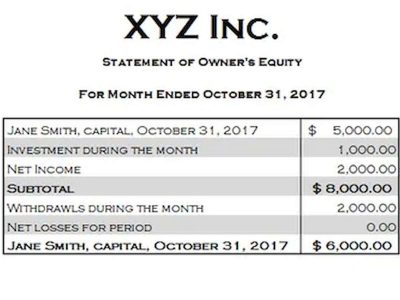
You might have been thinking that the contribution margin sounds like EBIT or EBITDA, but they’re actually pretty different. Going back to that beauty company example from earlier, we’ll assume the business has expanded into the high-end skincare market and wants to see how the new line is performing financially. FundsNet requires Contributors, Writers and Authors to use Primary Sources to source and cite their work. These Sources include White Papers, Government Information & Data, Original Reporting and Interviews from Industry Experts.
Understanding Currency Translation: The Temporal Method Explained
After gathering the data you http://sulh.info.az/wordpress/2023/09/07/prepaid-expenses-examples-accounting-for-a-prepaid-2/ need, the next step is to categorize the expenses. Meaning, it will have to earn a minimum amount of revenue to cover its expenses. Additionally, it’s also easier to identify which expenses eat up most of the revenue. Another example, there would be no cost of goods sold if there are no sales.
What is a contribution format income margin?
- Media Masters is currently reporting total net operating income of $25,000.
- This helps in calculating the “contribution margin,” which is the revenue remaining after variable costs that can contribute to fixed costs and profit.
- The contribution margin is calculated by deducting the company’s total variable cost during the period from the total sales made during the period.
- Note that the highest contribution margin in dollars does not always result in the highest contribution margin ratio.
- Contribution margin analysis shines in how managers deal with factors of production costs.
- Traditional income statements calculate a company’s gross profit margin by subtracting the cost of goods sold COGS from revenue.
It determines the point where total revenues equal total costs, indicating no net loss or gain. By calculating the break-even point, companies can assess the viability of new ventures or the sustainability of existing operations. This insight helps managers set realistic sales targets and pricing strategies. Fixed costs, like rent, salaries, and insurance, remain constant regardless of production levels. Their stability aids financial planning but presents challenges if sales fall short. Balancing cost structure is crucial for maintaining flexibility while covering fixed expenses.

Contribution Margin (%) or Ratio:
Since expenses are categorized as to whether they are variable or fixed, it is much easier to assess whether a product, service, or even segment is profitable or not. This format helps external users see how much of the revenues are dedicated to variable-costs and the amount of fixed-costs that the company is committed to. In fact, Coca Cola’s assembly line only requires one employee to run the filling station that fills more than 2,000 soda cans a minute.

- The contribution margin represents the amount of revenue left over after subtracting variable costs from total revenue.
- To resolve bottlenecks, contribution margin can be used to decide which products offered by the business are more profitable and, therefore, more advantageous to produce, given limited resources.
- Variable expenses fluctuate based on the business’s usage or output, such as utility bills or raw materials.
- It provides actionable insights to fuel strategic decisions, improving efficiency and profitability for companies of any size.
- This financial metric provides crucial insight for strategic business planning.
- It is also easier to identify which expenses consume the majority of the revenue.
The contribution format How to Invoice as a Freelancer income margin is essential for understanding the financial performance of individual products or services. It’s used to make informed decisions about pricing, production, and cost management. In short, understanding variable costs and how they relate to the contribution margin is key for any business. It’s one of the performance indicators that can tell you a lot about how well the business is doing, which products are worth selling more of, and how to avoid losing money.

Cost of Goods Sold (COGS):
By doing this, we see the contribution margin income statement gross profit margin, which helps businesses decide on pricing and how to manage costs to generate more money. This step is part of creating a contribution margin statement, which is a type of profit and loss statement. It shows us the money made from selling products or services after covering the costs to make them. This statement highlights the importance of managing regular income, operating income, and the costs involved in making products or services.